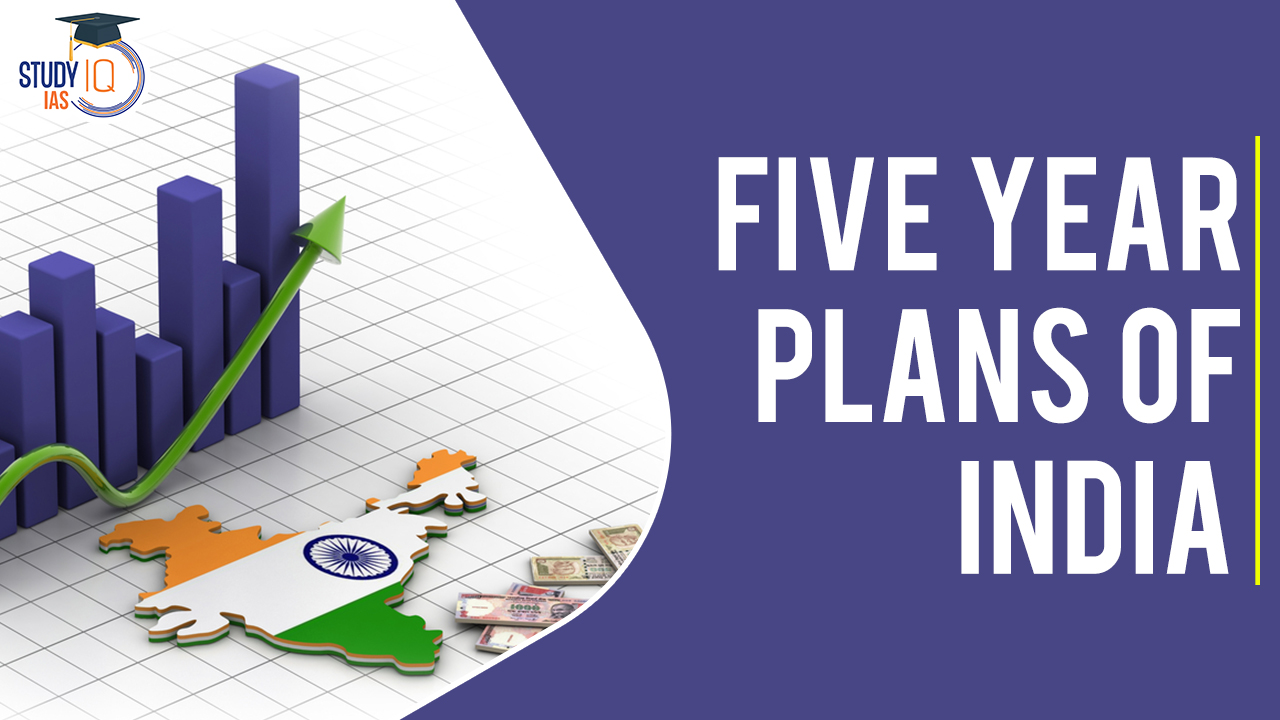Table of Contents
Five Year Plans of India
The Five-Year Plans were a series of national economic development plans implemented by the Indian government to promote industrialization and economic growth. They were first introduced in India in 1951, shortly after India gained independence from British colonial rule, and continued until 2017.
We’re now on WhatsApp. Click to Join
Objectives of Five Year Plans of India
The Five-Year Plans of India was a series of economic and social development initiatives launched by the Government of India to promote economic growth, social welfare, poverty reduction, regional balance and self-reliance in a planned and systematic manner.
Key Features of Five Year Plans of India
Here are some key features of the Five-Year Plans in India:
- Goals: Each Five-Year Plan had specific goals and objectives that were designed to promote economic growth and development in different sectors, such as agriculture, industry, infrastructure, and social welfare.
- Planning Commission: The Planning Commission of India was responsible for formulating the Five-Year Plans. The Commission would assess the current state of the economy, identify areas that needed improvement, and set targets for the next five years.
- Implementation: The implementation of the Five-Year Plans was carried out through various government departments and agencies at the national, state, and local levels.
- Funding: The funds required for implementing the Five-Year Plans were sourced from the government’s budget, loans from international organizations, and private investments.
- Results: Over the years, the Five-Year Plans helped India achieve significant progress in various sectors, such as agriculture, education, healthcare, and infrastructure. However, some plans were more successful than others, and there were also instances of corruption and inefficiencies in implementation.
Current Status of Five Year Plans of India
The Government of India stopped the Five-Year Plans after the Twelfth Five-Year Plan (2012-2017) and replaced them with a new think tank body called the Niti Aayog, which focuses on sustainable development goals and long-term planning.
List of Five Year Plans of India
Here is a complete list of Five Year Plans of India along with the Time Period and its Salient Features:
| Five Year Plan | Time Period | Salient Features |
Achievements |
| First Plan | 1951-1956 |
|
Increased agricultural production, setting up of the Bhilai Steel Plant and the Damodar Valley Corporation, establishment of the Indian Institutes of Technology (IITs) |
| Second Plan | 1956-1961 |
|
Established several public sector enterprises, including Hindustan Machine Tools (HMT), Steel Authority of India Limited (SAIL), and Oil and Natural Gas Corporation (ONGC), Green Revolution in agriculture |
| Third Plan | 1961-1966 |
|
Establishment of major steel plants at Bokaro and Rourkela, expansion of the railway network, introduction of high-yielding varieties of wheat and rice |
| Fourth Plan | 1969-1974 |
|
Increase in food grain production, establishment of the National Dairy Development Board (NDDB), launch of the Family Planning Programme |
| Fifth Plan | 1974-1979 |
|
Establishment of the Rural Electrification Corporation, launch of the Employment Guarantee Scheme, establishment of the National Bank for Agriculture and Rural Development (NABARD) |
| Sixth Plan | 1980-1985 |
|
Focus on rural development and poverty alleviation, establishment of the Small Farmers’ Development Agency (SFDA), establishment of the Rashtriya Mahila Kosh to promote microfinance for women |
| Seventh Plan | 1985-1990 |
|
Launch of the Jawahar Rozgar Yojana to promote employment, establishment of the Technology Development Board, initiation of the National River Conservation Plan |
| Eighth Plan | 1992-1997 |
|
Launch of economic reforms and liberalization, establishment of the Securities and Exchange Board of India (SEBI), establishment of the National Renewal Fund to retrain retrenched workers |
| Ninth Plan | 1997-2002 |
|
Focus on infrastructure development, the establishment of the National Highways Authority of India (NHAI), the launch of the National Programme of Mid-Day Meals in Schools |
| Tenth Plan | 2002-2007 |
|
Launch of the Sarva Shiksha Abhiyan to promote universal education, establishment of the National Rural Employment Guarantee Act (NREGA), increase in foreign direct investment |
| Eleventh Plan | 2007-2012 |
|
Establishment of the Unique Identification Authority of India (UIDAI), launch of the National Solar Mission, expansion of the National Rural Health Mission |
| Twelfth Plan | 2012-2017 |
|
Establishment of the Goods and Services Tax (GST), the launch of the National Skill Development Mission, the launch of the Pradhan Mantri Jan Dhan Yojana to promote financial inclusion |
Five-Year Plans of India Brief Analysis
The Five-Year Plans of India, spanning from 1951 to 2017, were instrumental in steering the country’s economic development and growth. The early plans, such as the First and Second, laid the groundwork for industrialization and agriculture.
The Green Revolution was initiated during the Third Plan, leading to increased food production. Subsequent plans addressed social justice, poverty alleviation, and human resource development. The Eighth Plan marked the beginning of economic liberalization, opening up the economy to foreign investment. The Tenth and Eleventh Plans emphasized inclusive growth, rural development, and social sectors. The Twelfth Plan focused on sustainable development, infrastructure, and manufacturing.
Post-2017, India shifted away from the traditional Five-Year Plan model, with the NITI Aayog taking charge of development strategies. Challenges ranged from financial constraints to regional imbalances and global economic uncertainties. Despite challenges, the plans achieved successes in infrastructure development, poverty alleviation, and technological advancements, shaping India’s economic and social landscape.
Five Year Plans of India UPSC
The Five-Year Plans of India is a crucial topic for UPSC aspirants because they form an important part of the Indian economy and polity. This topic is specifically mentioned in the UPSC Syllabus under General Studies paper III, which deals with the Indian economy, planning, and development. Aspirants who are preparing for UPSC exams need to have a clear understanding of the Five-Year Plans and their salient features to answer questions related to economic planning and development in India.
Moreover, online coaching and mock tests for UPSC exams often cover this topic in detail and provide aspirants with a comprehensive understanding of the Five-Year Plans and their importance in the Indian economy. Aspirants can benefit from UPSC Online Coaching by attending lectures, participating in discussions, and accessing study materials related to the Five-Year Plans. Similarly, the UPSC Mock Test can help aspirants assess their knowledge of this topic and identify areas that need further study.
| Other Important Articles | |
| Foreign Direct Investments | Circular Flow of Income |
| External Debt of India | LPG Refoms in India |


 Index of Industrial Production 2025, For...
Index of Industrial Production 2025, For...
 List of GI Tag Products in India 2025, S...
List of GI Tag Products in India 2025, S...
 Sagarmala Finance Corporation Limited (S...
Sagarmala Finance Corporation Limited (S...





















